Choosing the right espresso machine can be a game-changer in your daily coffee routine. Whether you’re an experienced barista at home or someone just beginning to explore the joys of espresso, understanding the nuances between different models is crucial.
In this article, we’ll dive deep into the Philips 3200 vs 3300 espresso machines, comparing their key features, performance, and overall value. Grab your favorite mug, and let’s explore which machine best suits your needs!
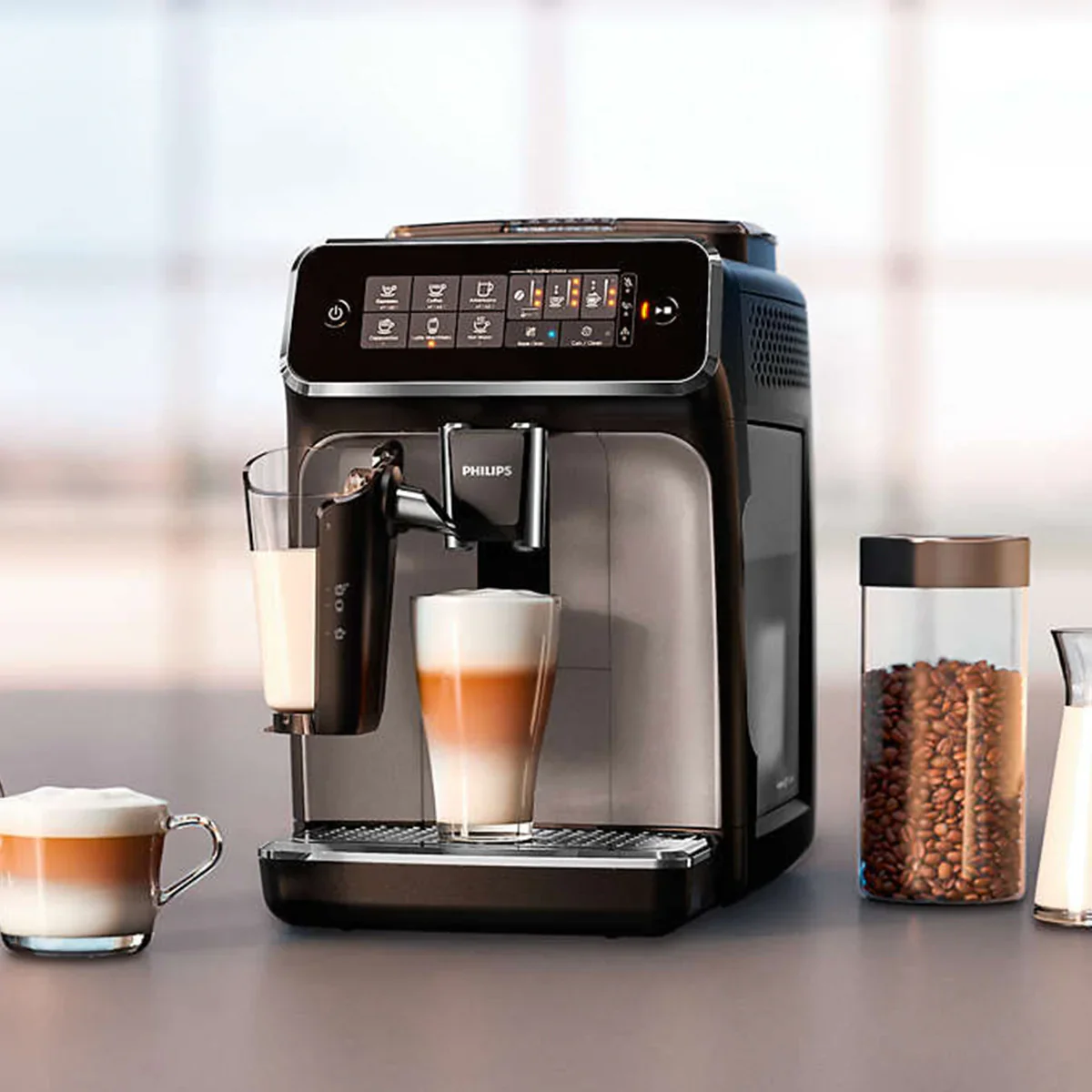
Philips 3200 vs. 3300 Espresso Machines Comparison
When comparing the Philips 3200 vs 3300 espresso machines, it’s important to highlight the unique features and upgrades that each model offers. Both machines are part of Philips’ highly regarded line of fully automatic espresso makers, known for their reliability, ease of use, and quality coffee production. Let’s examine what sets these two models apart.
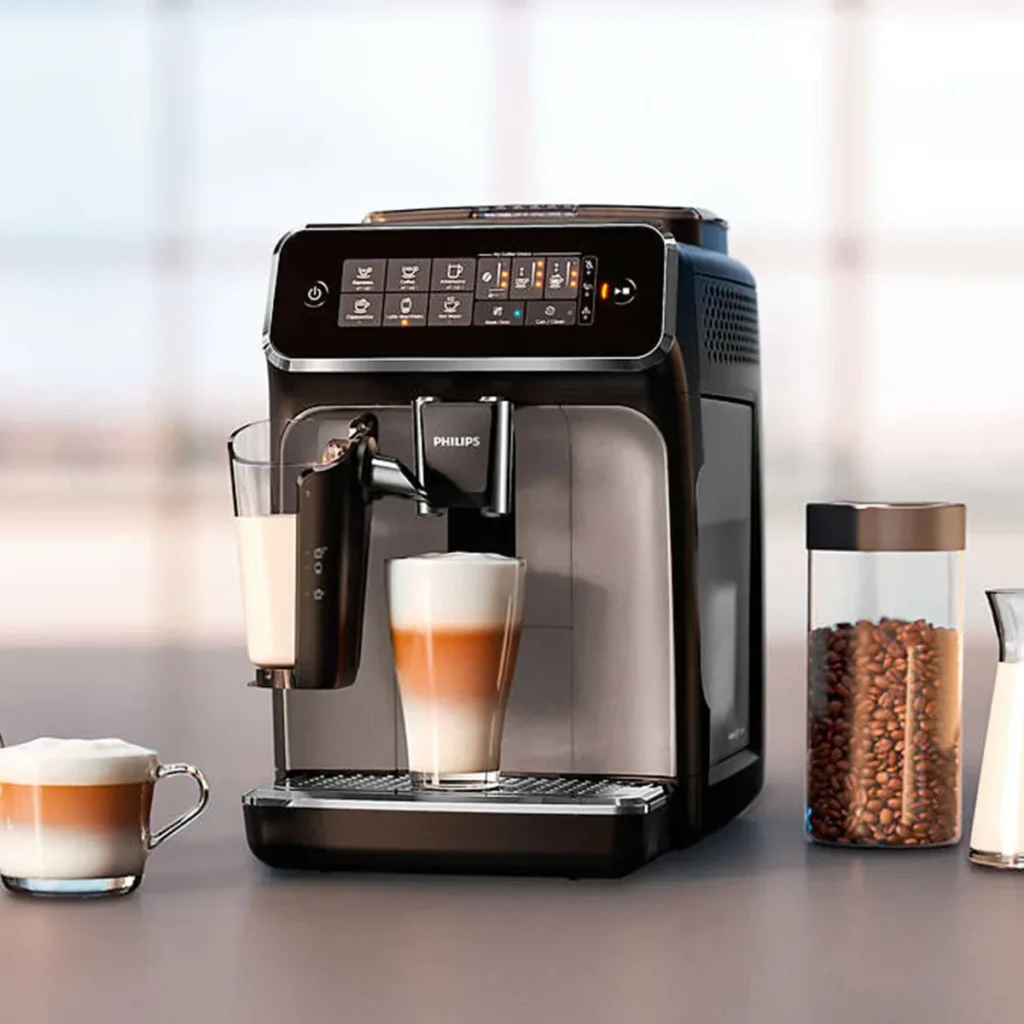
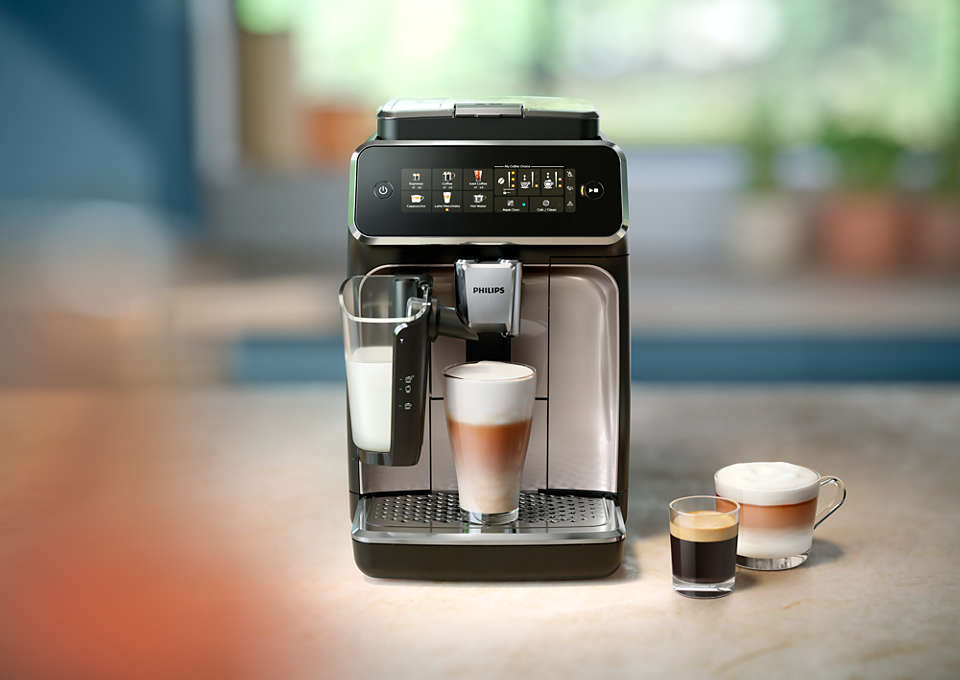
Key Features Comparison
User Interface
The user interface is one of the most noticeable differences between the Philips 3200 and 3300 models. The Philips 3200 features a classic button-operated control panel that is simple and intuitive. Users can easily select their preferred coffee type, adjust strength, and control the milk frothing system with clearly labeled buttons.
In contrast, the Philips 3300 boasts an enhanced interface with a color touch display, providing a more modern and user-friendly experience. This upgrade not only makes the machine more aesthetically pleasing but also simplifies the process of customizing your coffee drinks, offering more convenience for those who prefer a digital touch.
Brewing Technology
Philips 3200
The Philips 3200 espresso machine is equipped with a reliable brewing system that ensures consistent espresso quality. It operates with a 15-bar pressure pump, essential for extracting the rich flavors and aromas from the coffee grounds. The machine’s Thermoblock heating technology allows it to heat up quickly and maintain an optimal brewing temperature, ensuring every cup of espresso is served hot and flavorful.
Philips 3300
The Philips 3300 takes the brewing experience a step further with its improved brewing capabilities. Like the Philips 3200, it also features a 15-bar pressure pump, guaranteeing excellent extraction of coffee flavors. However, the 3300 model incorporates an upgraded Thermoblock heating system that enhances temperature stability and efficiency. Additionally, the 3300 includes the LatteGo milk frothing system, which integrates seamlessly with the brewing process, making it easier to prepare milk-based espresso drinks like lattes and cappuccinos with consistent quality.
Design and Build Quality
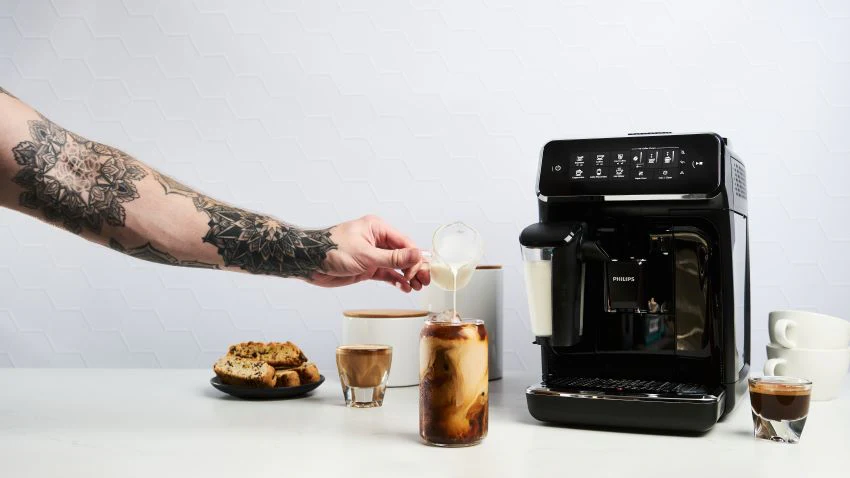
Philips 3200
The Philips 3200 has a classic and durable design that balances functionality with aesthetics. Constructed with high-quality materials, the machine’s exterior is made of sturdy plastic with stainless steel accents, offering a sleek yet timeless look that fits well in any kitchen setting. The build quality of the Philips 3200 is solid, with well-fitted components that ensure it can withstand daily use without any issues.
Philips 3300
The Philips 3300 features a more contemporary and refined design, characterized by its sleek and minimalist appearance. Crafted with premium materials, including a combination of high-grade plastic and stainless steel, it offers both durability and a modern look. The machine’s compact footprint makes it an ideal choice for kitchens with limited counter space. The build quality of the Philips 3300 is exceptional, focusing on precision and attention to detail, providing a reliable and aesthetically pleasing espresso machine that can handle frequent use.
Performance and User Experience
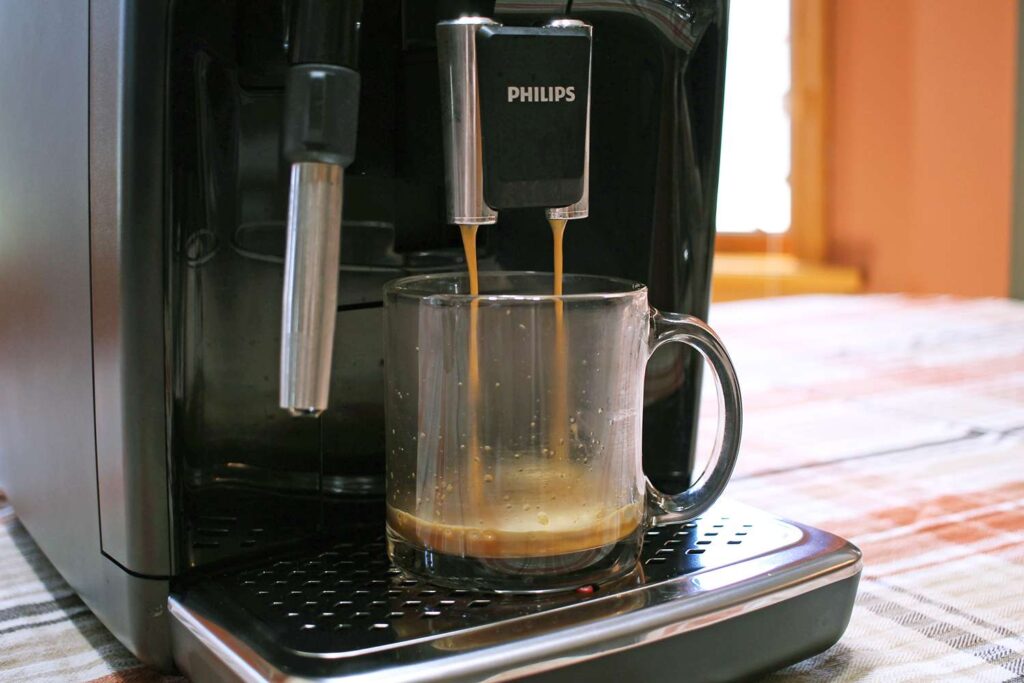
Philips 3200
The Philips 3200 delivers consistent performance with its 15-bar pressure pump, producing high-quality espresso with a rich crema. The Thermoblock system ensures the machine heats up quickly, reducing waiting time. Its straightforward control panel is user-friendly, making it easy for beginners to brew their favorite drinks without hassle.
Philips 3300
The Philips 3300 offers an enhanced user experience with its upgraded Thermoblock system, which provides faster heating and stable temperatures. The advanced touch display and customizable settings further enhance the user experience, allowing for personalized coffee preferences. The LatteGo system simplifies milk frothing, making it perfect for those who enjoy lattes and cappuccinos.
Ease of Use
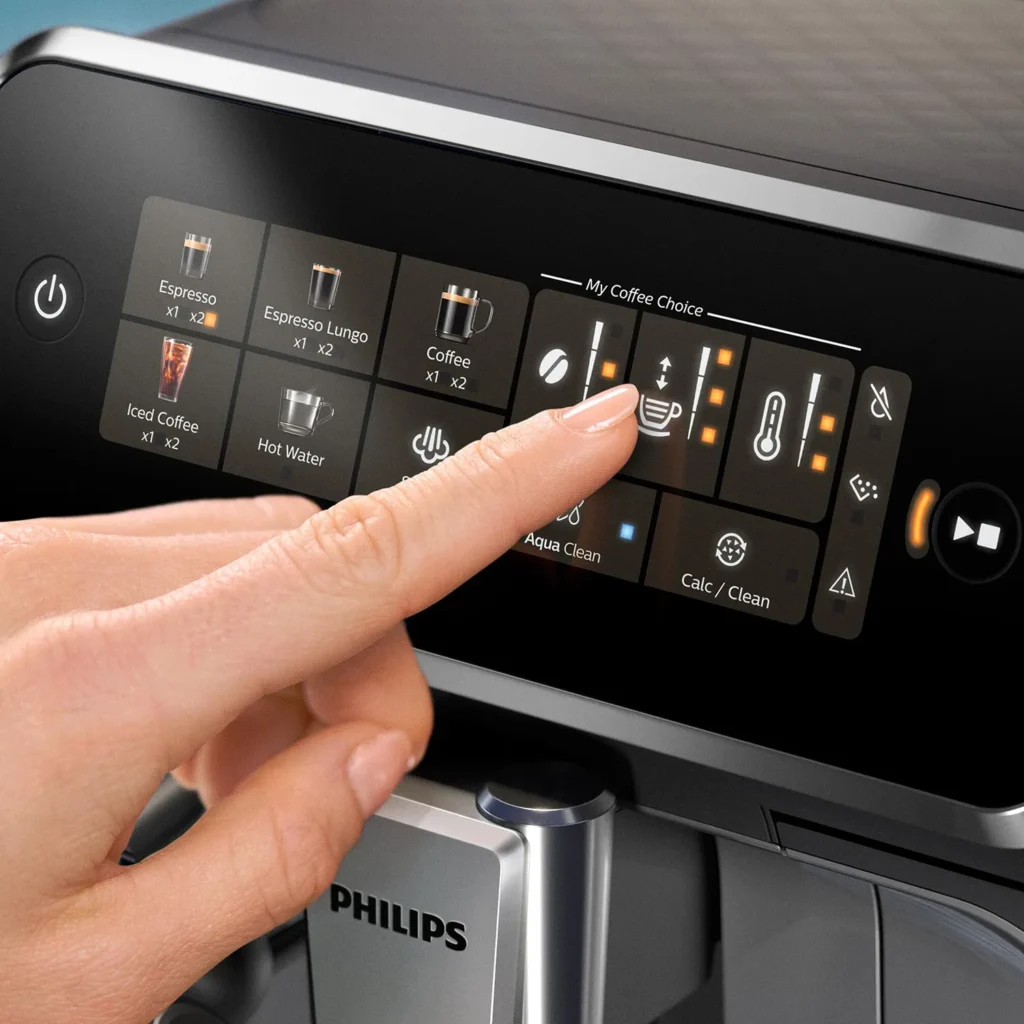
Philips 3200
The Philips 3200 is designed with simplicity in mind, making it highly accessible for new users. Its intuitive control panel features clearly labeled buttons for different coffee options, ensuring a minimal learning curve. The straightforward design allows users to quickly master the art of brewing espresso without needing extensive instructions.
Philips 3300
The Philips 3300 elevates user convenience with its advanced touch display, offering a modern and interactive experience. The customizable settings enable users to easily adjust coffee strength and volume, catering to personal preferences. Despite its advanced features, the interface remains user-friendly, making it easy for both novices and experienced users to operate.
Maintenance and Cleaning
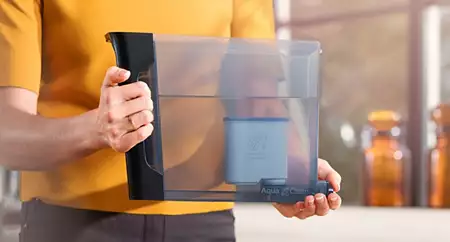
Philips 3200
Maintaining the Philips 3200 is straightforward, thanks to its removable brew group and dishwasher-safe components. Regular cleaning of the drip tray and water tank is essential to ensure optimal performance. The machine also features a descaling alert, reminding users when it’s time to descale, which helps prolong the machine’s lifespan.
Philips 3300
The Philips 3300 is designed for easy maintenance, featuring the LatteGo system, which consists of only two parts and no tubes, making it quick and easy to clean. The machine’s brew group is removable for thorough cleaning, and many parts are dishwasher-safe. Regular descaling and cleaning routines are simplified, thanks to the machine’s automated alerts and user-friendly design.
Price and Value
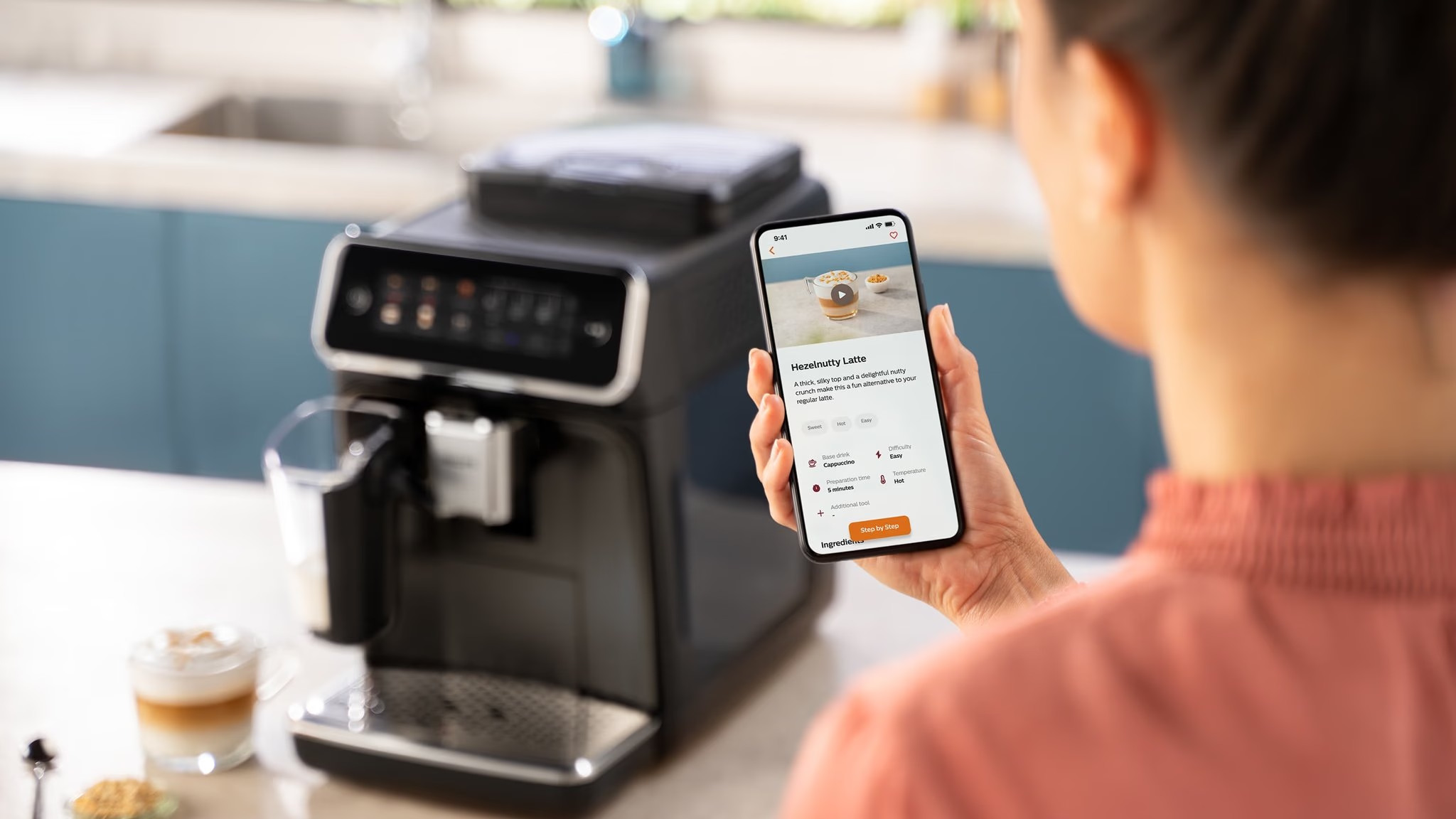
The Philips 3200 offers excellent value for those seeking a reliable espresso machine at a moderate price point. Typically priced lower than the 3300, it provides essential features and robust performance. With a standard warranty, it ensures peace of mind and solid investment for coffee lovers.
The Philips 3300, though slightly more expensive, justifies its higher price with advanced features like the LatteGo system and a touch display. It offers a premium espresso experience with greater customization and convenience. The machine also comes with a comprehensive warranty, making it a worthwhile investment for enthusiasts seeking top-notch performance and ease of use.
Cost Comparison
When comparing the Philips 3200 vs 3300 espresso machines, cost is a significant factor that can influence your decision. Here’s a detailed look at the prices and whether the additional features of the higher-priced model are justified.
Direct Price Comparison: The Philips 3200 is positioned as an entry-level espresso machine, typically priced around $500 to $600. This makes it an attractive option for those who want a quality espresso machine without breaking the bank.
In contrast, the Philips 3300 is a mid-range model with a price tag ranging from $700 to $800. The higher cost reflects its advanced features and improved build quality, catering to users who desire more control and customization in their coffee-making experience.
- Justifying the Higher Cost: The higher cost of the Philips 3300 can be justified by several key features that enhance the overall user experience:
- Advanced Brewing Technology: The 3300’s Thermoblock heating system offers faster heating times and more precise temperature control, ensuring consistently excellent espresso shots. This feature can be a game-changer for coffee enthusiasts who appreciate the nuances of perfect extraction.
- User Interface: The modern touch screen interface on the Philips 3300 provides a more intuitive and interactive experience compared to the simpler control panel of the 3200. This makes it easier to navigate settings and customize drinks, adding convenience and enjoyment.
- Build Quality: The Philips 3300’s combination of metal and high-quality plastic components gives it a more premium and durable feel. The improved build quality not only enhances the machine’s aesthetic appeal but also its longevity.
- Customization Options: The 3300 offers more customization settings for brewing, allowing users to fine-tune their espresso to their exact preferences. This level of control can significantly enhance the coffee-making experience for those who enjoy experimenting with different flavors and strengths.
While the Philips 3200 provides excellent value at a lower cost, the Philips 3300’s higher price is justified by its advanced features, improved user interface, and superior build quality. For users who are passionate about their coffee and willing to invest in a more sophisticated machine, the Philips 3300 offers substantial benefits that make the additional cost worthwhile.
Consumer Reviews and Feedback
Understanding the experiences of other users can provide valuable insights when deciding between the Philips 3200 and 3300 espresso machines. Here’s a summary of customer reviews and feedback, highlighting satisfaction levels and common complaints for both models.
Positive Feedback
Philips 3200: Customers generally praise the Philips 3200 for its ease of use and reliable performance. Many users appreciate the straightforward control panel and the quality of espresso it produces. The milk frother is also highlighted as a strong point, particularly for those who enjoy manual frothing. Users often mention that the machine offers great value for money, delivering consistent results without the need for advanced features.
Philips 3300: The Philips 3300 receives positive reviews for its advanced features and user-friendly interface. Customers love the LatteGo system for its convenience and easy cleaning. The touch display and customizable settings are frequently mentioned as standout features that enhance the brewing experience. Many users feel that the higher price is justified by the added convenience and performance, making it a favorite among espresso enthusiasts who seek a more premium experience.
Criticisms and Issues
Philips 3200: Some users have reported minor issues with the Philips 3200, such as the need for frequent descaling and occasional leaks from the water tank. A few customers also feel that the machine’s plastic components could be more durable. Despite these concerns, the overall feedback remains positive, with many users acknowledging that these issues are manageable given the machine’s price point.

Philips 3300: The Philips 3300, while generally well-received, has its share of criticisms. Some users find the touch display to be overly sensitive, leading to accidental selections. A few customers have also reported inconsistencies with the LatteGo system, particularly in achieving the desired froth texture. Additionally, the higher price is a point of contention for budget-conscious buyers. Nonetheless, most users agree that the benefits outweigh these drawbacks, especially for those seeking advanced features and customization.

In summary, both the Philips 3200 and 3300 have garnered positive feedback for their respective strengths. The Philips 3200 is appreciated for its simplicity and value, while the Philips 3300 is favored for its advanced features and ease of use. By considering customer reviews, potential buyers can gain a well-rounded understanding of what each model offers, helping them make an informed decision based on their preferences and budget.
FAQs
What are the main differences between the Philips 3200 and 3300 espresso machines?
The main differences include the user interface, with the 3200 featuring a button-operated control panel and the 3300 offering a color touch display. The 3300 also includes an upgraded Thermoblock system and the LatteGo milk frothing system, providing faster heating, better temperature stability, and easier milk-based drink preparation.
Is the Philips 3300 worth the extra cost compared to the Philips 3200?
Yes, if you value advanced features like a touch screen interface, faster heating, better temperature control, and an easy-to-clean milk frothing system. These upgrades make the 3300 a better choice for those who want a more premium espresso-making experience.
Which machine is easier to use, the Philips 3200 or 3300?
Both machines are user-friendly, but the Philips 3300 offers a more modern and interactive experience with its touch screen interface. However, the Philips 3200’s simpler control panel may be preferred by those who favor a straightforward, button-operated system.
How does the LatteGo system in the Philips 3300 improve the espresso-making experience?
The LatteGo system simplifies the process of preparing milk-based drinks by eliminating the need for tubes and complex frothing mechanisms. It is easy to clean, and users can quickly create consistent milk froth for lattes and cappuccinos.
What kind of maintenance is required for the Philips 3200 and 3300?
Both machines require regular cleaning, including descaling and cleaning of the brew group, drip tray, and water tank. The 3300’s LatteGo system is particularly easy to maintain, as it consists of only two parts and is dishwasher-safe. Both machines also feature automated alerts to guide users through necessary maintenance tasks.
Can I make customized coffee drinks with the Philips 3200 and 3300?
Yes, both machines allow for customization of coffee strength and volume. The Philips 3300 offers more advanced settings and greater control, making it easier to tailor your espresso to your exact preferences.
Conclusion
In the Philips 3200 vs 3300 espresso machine comparison, the choice ultimately depends on your specific needs and budget. The Philips 3200 is an excellent option for those seeking a reliable and straightforward machine that delivers high-quality espresso without breaking the bank.
On the other hand, the Philips 3300 justifies its higher price with advanced features, enhanced user experience, and greater customization options. Whether you prioritize simplicity or sophistication, both models offer compelling benefits that can significantly enhance your home coffee experience.
Disclosure: Our blog contains affiliate links to products. We may receive a commission for purchases made through these links. However, this does not impact our reviews and comparisons. We try our best to keep things fair and balanced, in order to help you make the best choice for you.

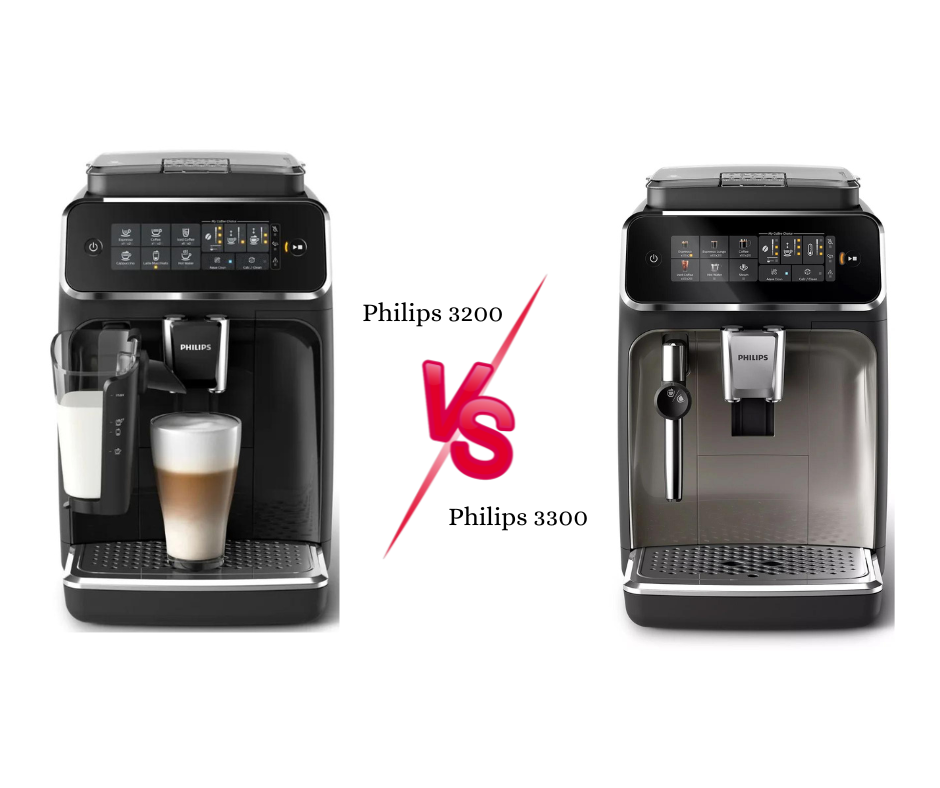

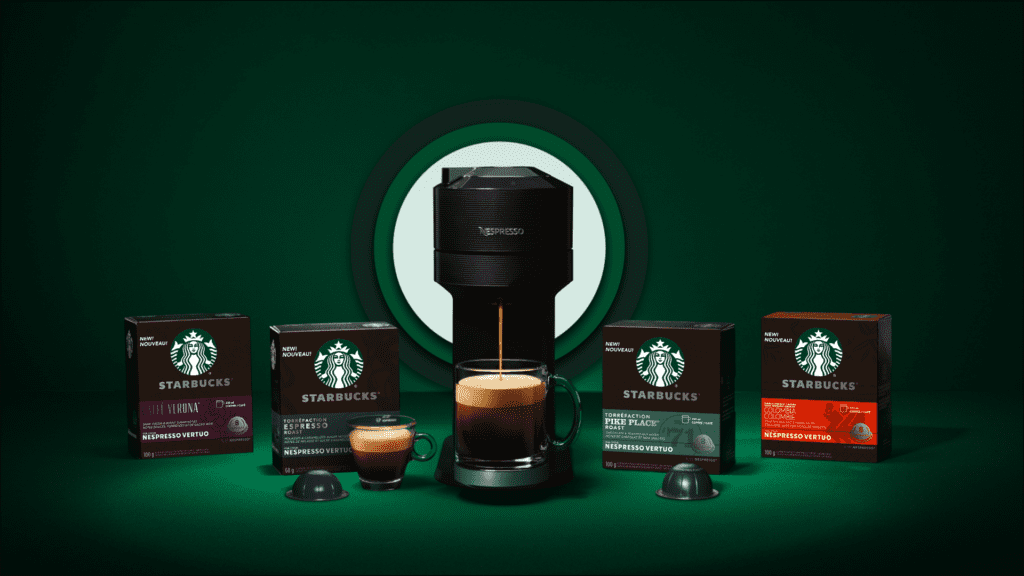



2 Responses